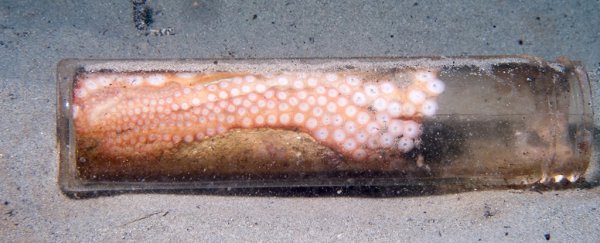
Octopuses Are Increasingly Using Trash For Shelter, Harrowing Study Shows
CARLY CASSELLA 14 MARCH 2022Human waste has become so ubiquitous in the ocean, it's becoming easier for octopuses to shelter in our trash than in seashells or coral.
A systematic review of underwater photographs and videos from around the world has tallied 24 cephalopod species making their homes in marine litter.
For years, divers and scientists have observed octopuses laying their eggs on marine plastic or abandoned fishing gear. Some of these clever creatures have even been caught using glass bottles, ceramic pots, metal pipes, rusted cans, or plastic cups to put a roof over their heads.
In many ways, octopus reproduction and survival today are at the whims of our waste. As the researchers note in their study, in areas where human tourists have collected too many sea shells, cephalopods of all ages have been forced to adapt or perish.
Human waste is a useful alternative to natural forms of protection, but researchers are worried what will happen if these clever creatures become too dependent on our litter for refuge.
"[A]ny apparent positive effect could also have several detrimental and indirect consequences," the authors warn in the study, led by marine biologists from the Federal University of Rio Grande in Brazil.
Some rubbish, for instance, could expose octopuses to toxic chemicals or heavy metals.
One of the photos collected in the review actually shows an octopus clinging to a heavily degraded battery, which is considered a "very polluting type of debris". Entanglement is also a concern, as well as physical harm from sharp edges.
The authors note that some newly described species, like the pygmy octopus in Brazil (Paroctopus cthulu), have only ever been observed sheltering in litter. There are no official records of this species using natural items like seashells for shelter, probably due to a scarcity of that material in its environment.
Instead, the pygmy octopus in Brazil mostly makes its home in the beer cans that are regularly thrown overboard by tourist boats. Even when divers in this region come to clean up marine waste, they often don't realize the cans they are collecting are hiding octopuses inside. As such, it's not uncommon to find pygmy octopuses wandering around on dive boats after such efforts.
Altogether, the authors of the current review were able to gather 261 underwater images and videos of octopuses interacting with marine waste. Most of the photographs and videos were gathered on social media with the permission of the original authors, but some were also contributed by scientists and marine research institutions.
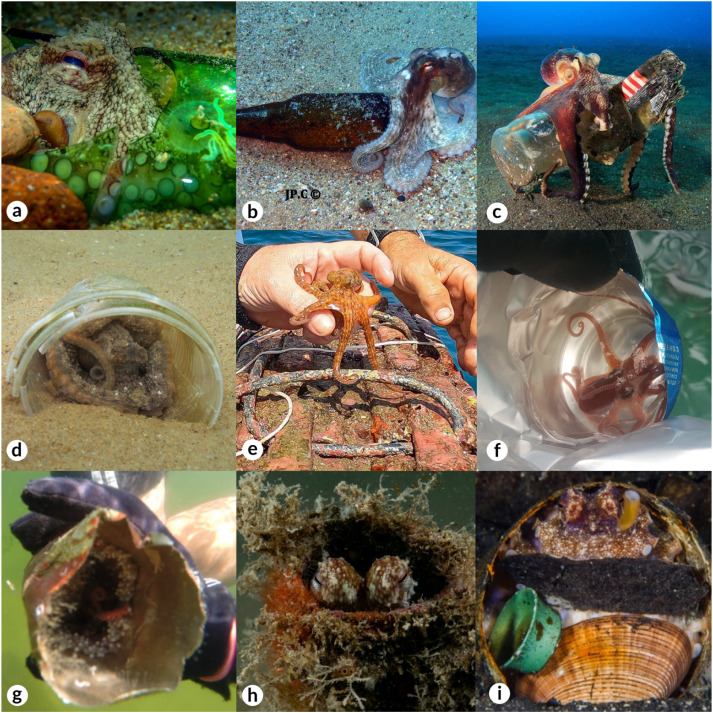 Examples of octopuses interacting with marine litter. (a-b: John Paul Meillon; c: Serge Abourjeily; d: Claudio Sampaio; e: Caio Salles; f-g: Edmar Bastos; h: Marco Panico; i: Federico Betti)
Examples of octopuses interacting with marine litter. (a-b: John Paul Meillon; c: Serge Abourjeily; d: Claudio Sampaio; e: Caio Salles; f-g: Edmar Bastos; h: Marco Panico; i: Federico Betti)
In fact, thanks to footage from remotely operated vehicles, researchers found even deep-sea octopuses in the Mediterranean are making use of sinking rubbish – the first time researchers have recorded this.
The authors found records of octopus/litter interactions had increased in the last few years, with most records occurring between 2018 to 2021. That could be because underwater photographs are easier to take now than ever, but it could also be a sign that the problem of marine waste is getting worse.
"Despite these descriptions, few studies have focused on the interactions between cephalopods and marine litter, and scientific information on this subject has scarcely been updated over the last decades," the authors write.
Further research is needed, but this initial review has revealed some important results.
The authors expected plastic to be the most commonly used octopus material, when, in fact, just over 40 percent of octopus interactions were with glass bottles, and these were predominantly used for shelter.
In comparison, roughly 24 percent of the octopus interactions were with plastic, and the creatures tended to sit on top of or burrow into these materials, as opposed to hiding inside of them.
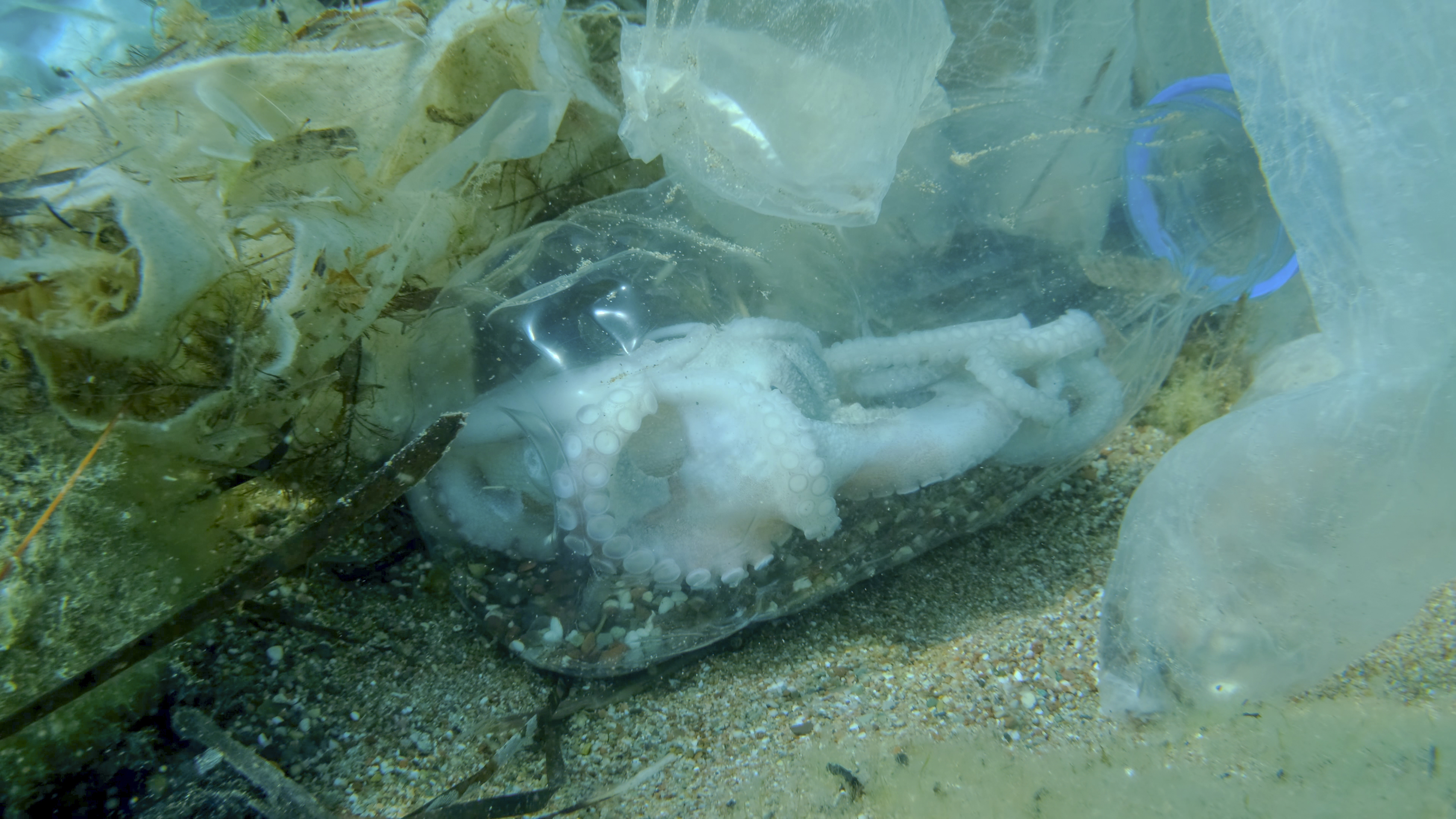 Dead octopus inside plastic botte. (Andriy Nekrasov/GettyImages)
Dead octopus inside plastic botte. (Andriy Nekrasov/GettyImages)
Glass is much harder to break apart, but it also sinks easier, which could make it more appealing to seafloor creatures. Plus, glass bottlenecks make it much more difficult for hungry predators to reach inside.
"[A]lso," the authors note, "the texture of glass may be more similar than plastic to the internal texture of seashells, contributing to its use as shelter."
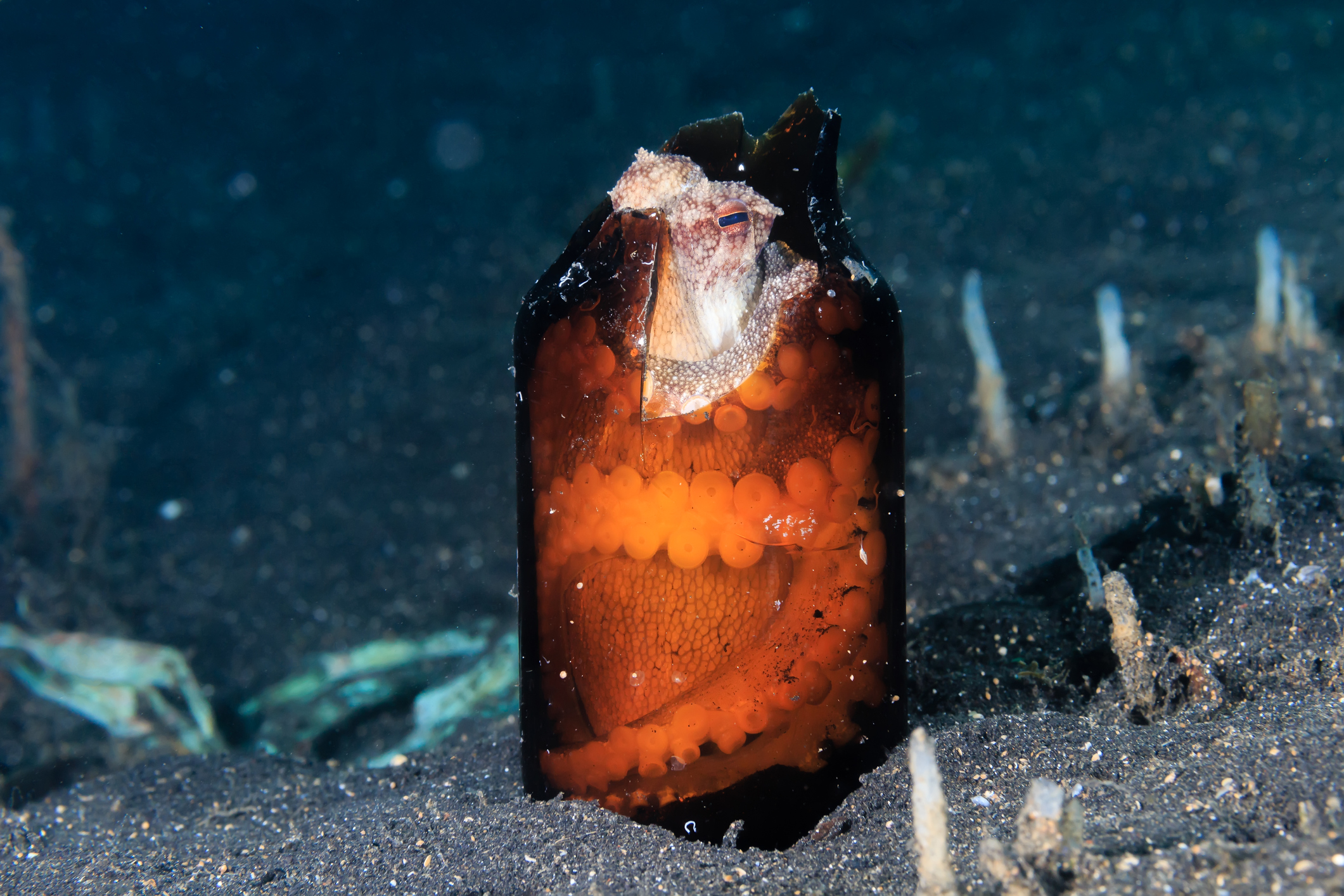 Coconut octopus in a glass bottle. (WhitcombeRD/Getty Images)
Coconut octopus in a glass bottle. (WhitcombeRD/Getty Images)
In the review, the most commonly recorded species that interacted with our waste seemed to be the coconut octopus (Amphioctopus marginatus). This species usually covers its head and body with a shell or coconut fortress, while still allowing its legs to creep along the seafloor to forage.
This is known as 'stilt walking', and in the review, there were nine accounts of octopuses using human waste to do just that.
Shells have become so scarce and human waste so common, five images actually show octopuses competing with one another for an artificial shelter.
Just look what we've made them do.
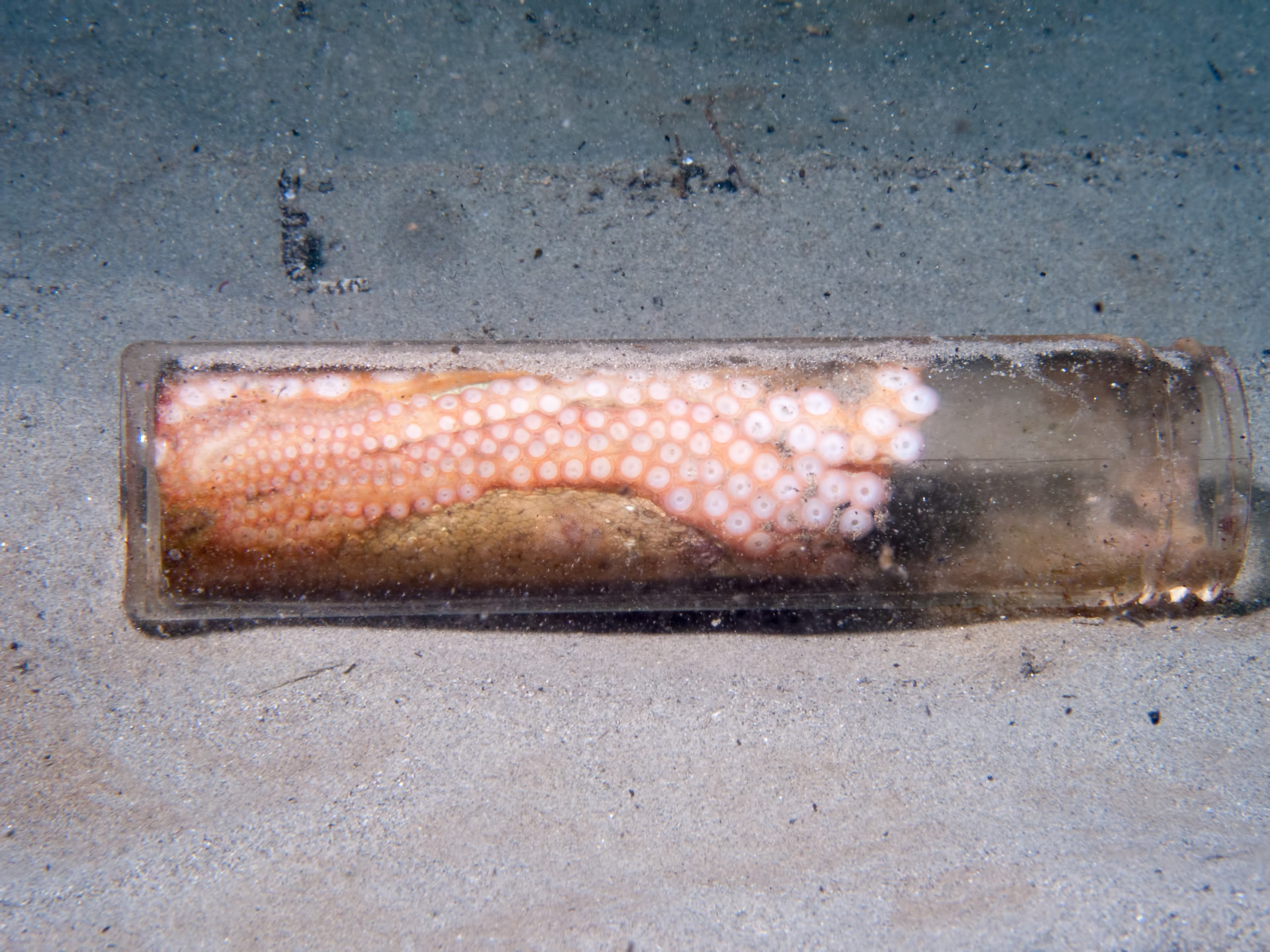 Octopus in a glass jar. (Steven Trainoff Ph.D./Getty Images)
Octopus in a glass jar. (Steven Trainoff Ph.D./Getty Images)
The study was published in Marine Pollution Bulletin.


comment 0 Comments
more_vert